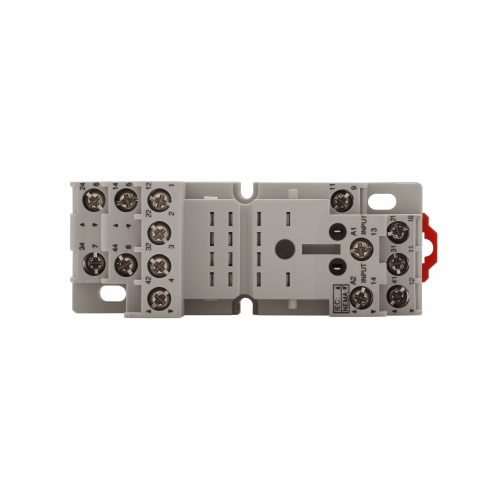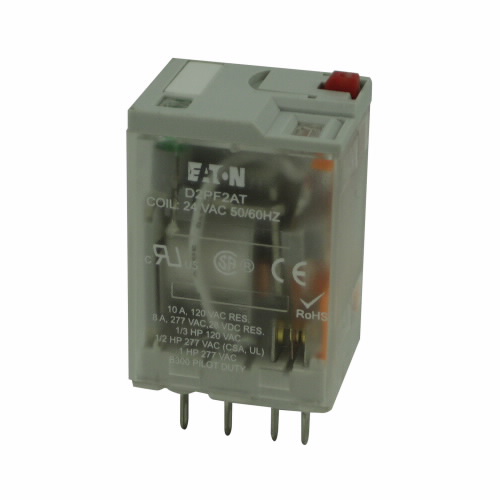Eaton D2 Series general-purpose relays are designed for controlling motors, lighting, heating and other industrial equipment. They feature a DPDT (double pole double throw) contact configuration that ...Read More
Eaton D2 Series general-purpose relays are designed for controlling motors, lighting, heating and other industrial equipment. They feature a DPDT (double pole double throw) contact configuration that allows the switching of two separate circuits or loads at the same time. These relays are also equipped with accessories, such as LED indicator lights, test buttons and auxiliary contacts, to monitor or control the relay's status. Read Less
 Change Country
Change Country




